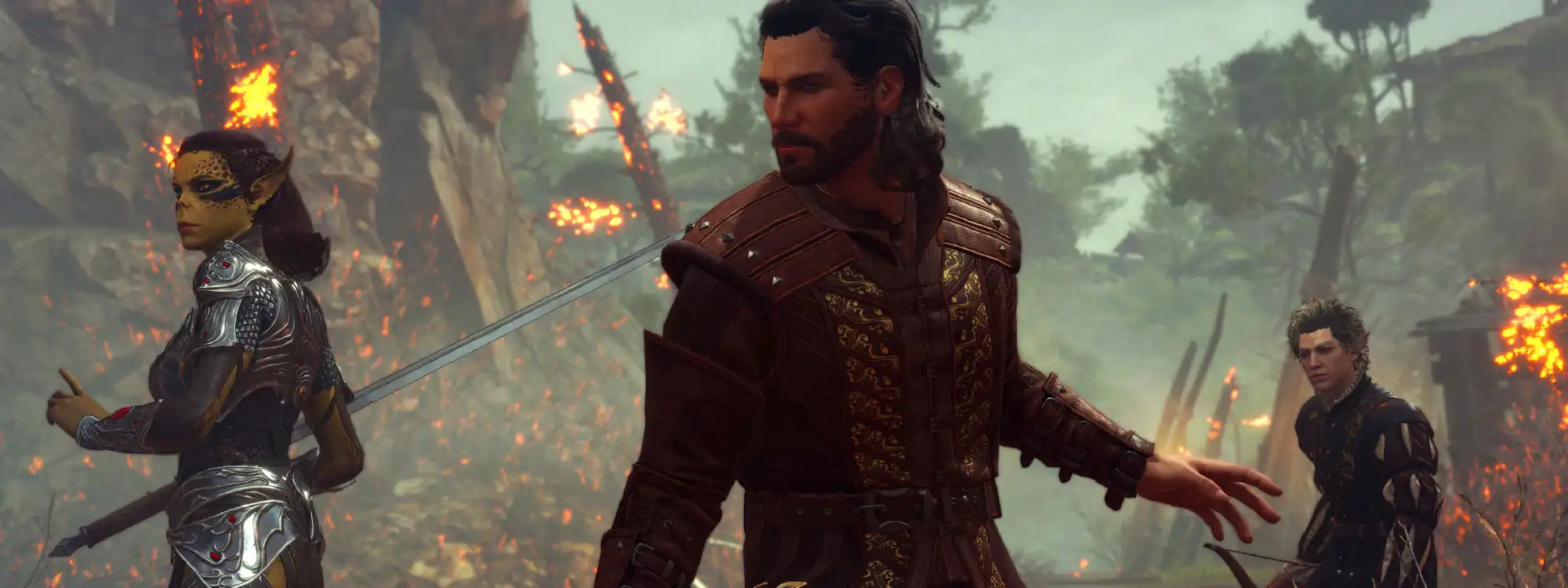Reflections on Diverse Relationships in Baldur's Gate 3
Immersive and expansive role-playing games often pride themselves on delivering a true-to-life simulated experience. Within these experiences, intimate relationships also form an integral part. Baldur's Gate 3, developed by Larian Studios, is no exception. The game presents a wide array of romantic options for players, irrespective of their character's gender or sexual orientation. While this broad representation of diversity in romantic scenarios is commendable, it has also sparked discussions among gamers.
The In-Game Mechanics of Romantic Options

The foundation of relationship-building in Baldur's Gate 3 is rooted in dialogues. Players are offered different dialogue options that often interest or intrigue their non-player characters (NPCs). These conversations are pivotal in defining a character's role and their interactions with others, directly impacting their romantic engagements.
The dialogues are not merely black and white. This fact, coupled with the inclusion of diverse romantic options, makes for an enduring appeal. However, some gamers believe that certain aspects of these romantic advancements seem rather in-your-face, especially when they diverge from the player's own orientation.
This viewpoint understandably stems from the fact that the representation of LGBTQ+ relationships in games is a relatively new phenomenon. Players may not be accustomed to being presented with homosexual romantic pathways in a game like Baldur's Gate 3, where romance is more than just an optional side-quest.
The Representation of LGBTQ+ Relationships in Gaming
As the gaming landscape has evolved, inclusivity and diversity have taken on greater importance. Developers have been improving representation, including romantic dynamics. Players bestowed with a variety of romantic options indicate a significant step towards embracing diverse orientations within gaming narratives.
However, as is often the case with any significant change, acceptance can take time. Baldur's Gate 3, with a broadened array of romantic options, inadvertently became a catalyst for debates about how these romantic advances are perceived by players who aren't used to such representation.
The Unfamiliarity Factor
For some players, the inclusion of LGBTQ+ romantic storylines in Baldur's Gate 3 feels more explicit than their heterosexual counterparts. This could be due to unfamiliarity. The predominant narrative structures in gaming often cater to heterosexual relationships, possibly making players less perceptive to dialogue options leading to straight romances.
Character interaction in Baldur's Gate 3 bowled over this pattern. A casual conversation could lead to flirting or reveal intimate backstory elements that potentially pave the way to relationships. As opposed to the subtler progressions witnessed in its predecessors, Baldur's Gate 3 presented romantic choices more forthrightly.
The Various Perspectives of Players
Assuming the shoes of the protagonist comes more naturally to some players than others, while many enjoy carving out a unique trajectory, irrespective of their personal beliefs or preferences. This is one of the many reasons behind the appeal of RPGs: the sheer independence it offers to navigate your character's journey.
For some, the same-gender love storylines seemed explicit because they contrasted starkly with their own point of intuition. However, for others, this was an affirming validation of their experiences being woven into the narrative in an approach paralleling other relationship paths.
The Role of Dialogues in Romance Development
Romance in Baldur's Gate 3 doesn't necessarily fall into former RPG tropes of saving damsels or champions in distress, rather it is rooted in developing interpersonal connections between characters. The opportunity to spark romance is presented more frequently and casually than in other RPGs.
The branching dialogue sequences play a massive part in this. Diverse choices make it easier to foster relationships with any party member. However, these branching dialogues can be misunderstood as an overt push towards certain romantic narratives, especially for players unaccustomed to such in-game dynamics previously.
Embracing Games as a Platform for Diverse Storytelling
It is critical to note that the relationship dynamics in Baldur's Gate 3 are a part of a larger trend in the gaming industry to promote inclusivity. With gaming narratives becoming increasingly reflective of the diverse realities of our contemporary world, unique relationship arcs, attuned to different orientations and preferences, are an essential part of this evolution.
Varying opinions in player preferences underpin the necessity for these discussions, ultimately contributing to more nuanced storytelling in gaming. It offers an opportunity for developers to synergize a game's mechanics with its narrative potential, making games such as Baldur's Gate 3 instrumental in driving the conversation about diversity and representation in gaming.
The Future of Romantic Dynamics in RPGs
As the gaming world continuously evolves, so does its approach to presenting diverse relationships. Developers are increasingly appreciating that promoting diverse relationship dynamics enhances games' relatability and realness, forming an essential component of the immersive RPG experience.
Baldur's Gate 3 has paved the way for an increasing number of games that offer romantic options to all players, a trend that demonstrates a more inclusive gaming world. However, it also highlights the need for careful and sensitive execution in presenting these options to players.
Catering to the Diverse Requirements of the Player Base
Developers also seek to accommodate the preferences of their diverse player base. Some players enjoy more explicit storylines, while others prefer subtler narratives. Hence, adjusting game mechanics to ensure an encompassing and fulfilling experience for players with different preferences can be a future direction.
Being mindful of these diverse requirements and expectations will ensure that players continue to be captivated by future RPG narratives. The discussions spurred by Baldur's Gate 3 have the potential to reshape the gaming industry, creating an even more inclusive and understanding space.